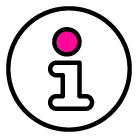Should my school offer make up lessons?
When I took over the school that I used to own, I took over all the rules and
guidelines. Actually, I took over a school that didn’t have ANY rules!
Students were free to come and go as they pleased.
There were 3 ways that they could sign up for lessons:
1. there was a book with a calendar in it. They could write their name in the
time slot they wanted to take a lesson.
2. call me or the part-time staff that I had (the part-time staff only worked
about 8 hours per week back then)
3. they could email us
Scheduling the old school way
Scheduling and handling the reservations was a pretty big job in itself.
Students had cards with squares on the back that we ticked off each time they
took a lesson.
Sometimes they forgot their cards and we had to try to keep track of that as
well.
About a year later when we grew a little bigger a friend
recommended I look into an online reservation system. After a few months of
procrastinating I finally did and it saved me a lot of time, energy and money.
I readily admit that I should have changed the rules and implemented more
structure as soon as I took the school over.
Students could cancel without any penalty. They could just not show up and
still not lose the lesson.
Students often asked for extensions on their contracts. No problem!
What kinds of rules should my school have?
The first rule that I suggest implementing is your makeup rule.
Should you offer make up lessons or not? How many per month or year? How
far ahead of a lesson should my students have to cancel lessons before
they’re penalized?
First off, let’s define what a make up lesson is, since some schools may have
their own idea or definition of what that may be.
A make up lesson is when a student is absent from a lesson due to illness or
for personal reasons.
Every school should have a rule that explains and clearly defines:
a. How many make up lessons students are able to take each month or year.
For example, students can cancel and make up one lesson per month.
b. Schools define the deadlines for when students must cancel their lesson by.
For example, students must cancel by 11:00pm the night before the lesson or
they’ll lose that lesson credit entirely.
Or students must cancel no later than three hours before the lesson or they’ll
lose the lesson credit entirely.
IMPORTANT: Set a time limit for how long students can
reserve makeup lessons
c. How long is the make up lesson valid?
For example, when a student cancels a lesson, how long do they have until that
“make up lesson” expires (for example, 21 days)
So Yuko cancels her lesson before the deadline and she has 21 days to make it
up.
IMPORTANT: if she cancels the make up lesson, the original expiration date for
that make up lesson applies.
Scenario A: The deadline is 11:00 pm the night before.
Yuko cancels her lesson at 10:30pm on August 1st.
She’s given a make up lesson and has 21 days to do the make up lesson, which
means the expiry date for the make up lesson is August 22nd.
Yuko reserves a make up lesson on August 7th.
She cancels the make up lesson on August 5th – The deadline remains the
same.
The deadline is not for an additional 21 days from the date that she canceled,
it’s the original make up lesson deadline.
So even if Yuko cancels her make up lesson on August 5th, the make up date
wouldn’t change to the 26th, it would remain August 22nd. It DOES NOT
continue to change each time that she cancels the make up lesson.
Of course there may be exceptions to the rule, when admin chooses or needs
to override the system and allow for a student who needs to miss an entire
month because of influenza, etc. However having clearly defined rules in place
is critical to ensuring that students (or parents) are not taking advantage of
you.
Be careful how many make up lessons you offer.
I’ll cover more things about ticket types and rules in next week’s blogs. Having
clear rules in place will save you a lot of headaches, time and money.
Structuring rules the right way can also create extra revenue. More about that
next week!
Keeping track of all of this… isn’t fun! Pocket Passport’s online reservation
system is a flexible solution for language schools. Cancelation rules, makeup
lessons, level up, level down and lots more.










